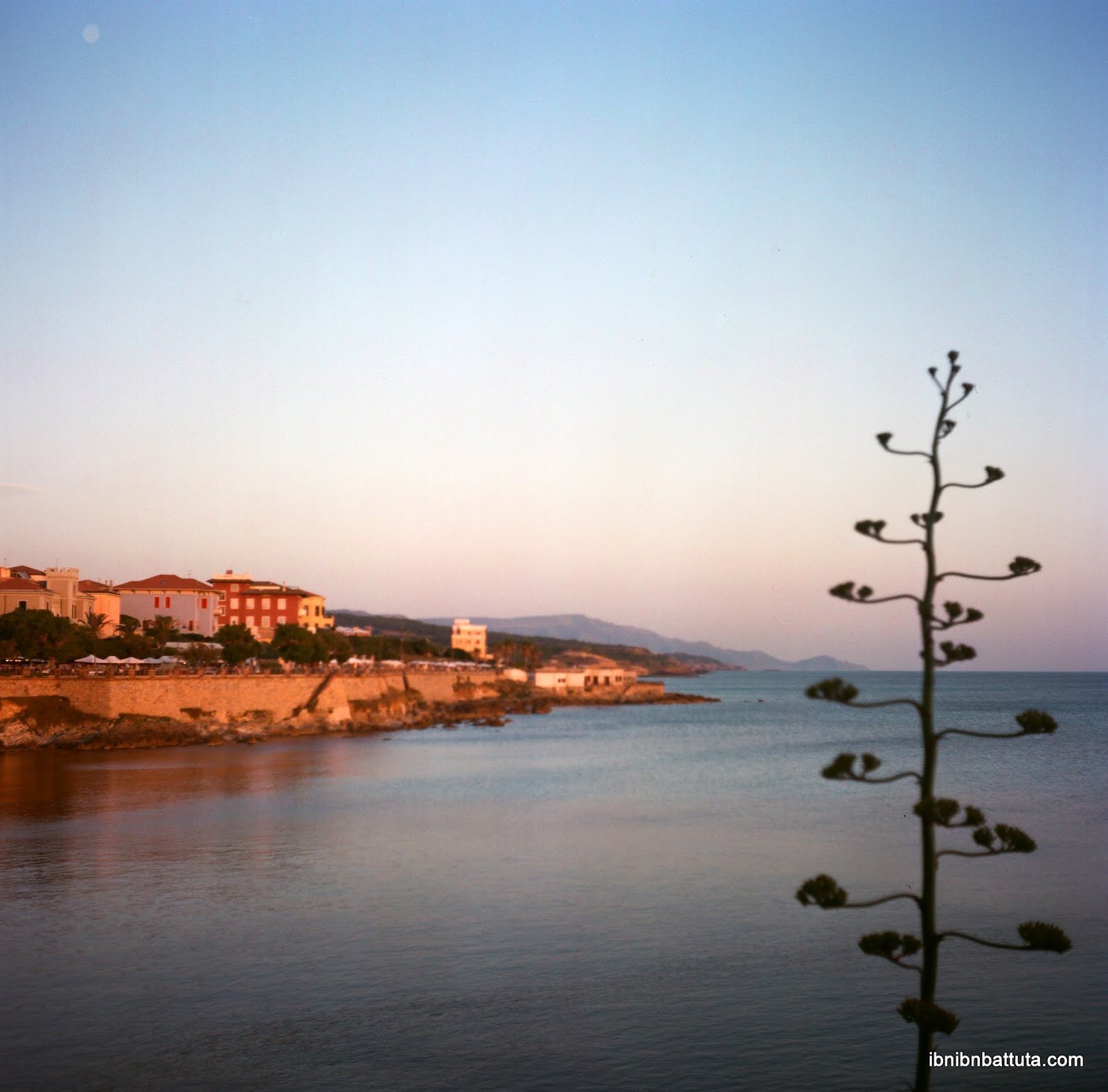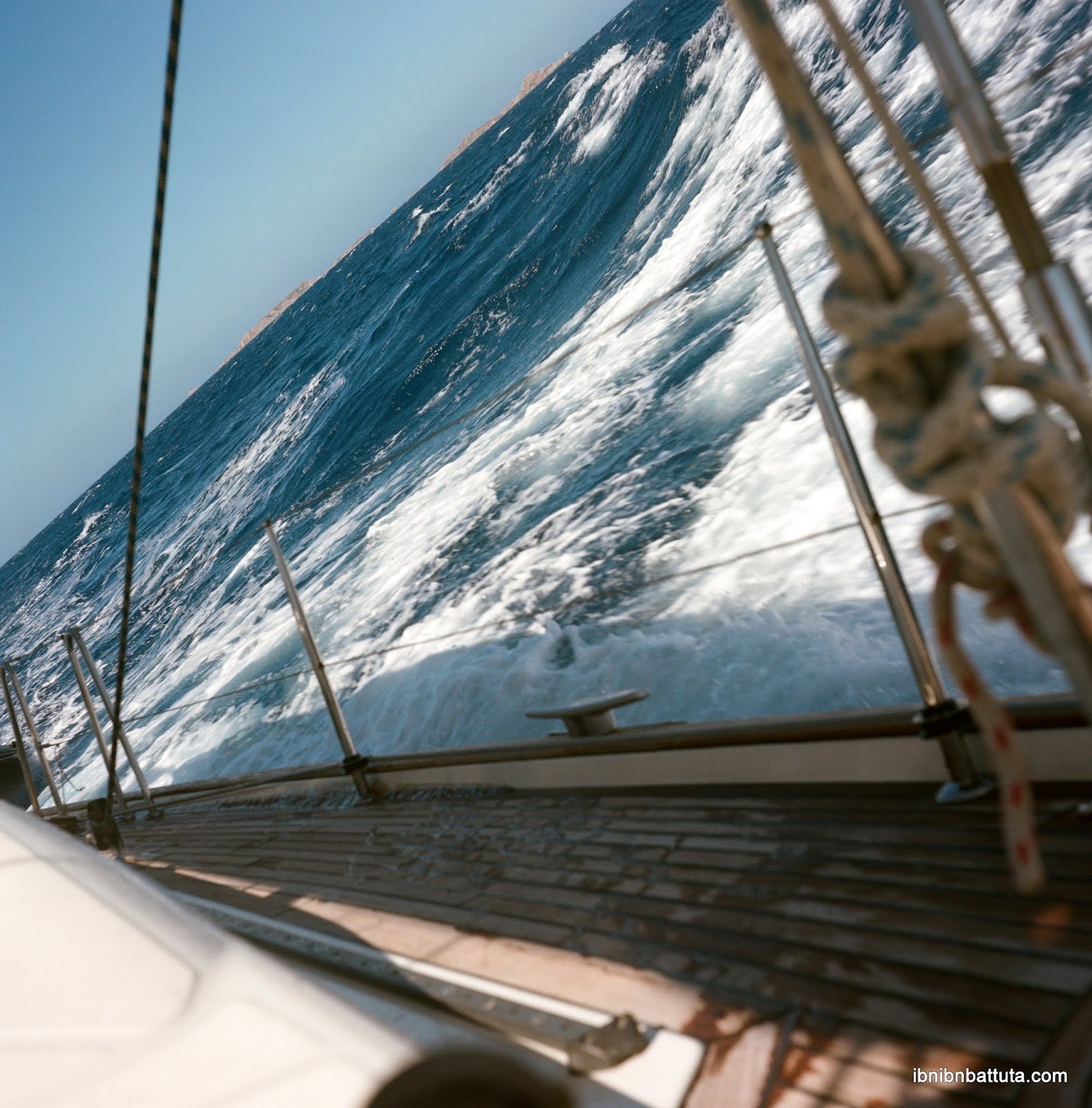Sardinia: Indulging in Italy's Wild Isle
Sitting on the beach is for losers. Vacation is supposed to make you feel alive.
With its Catalan influence, seafood dishes, and waterfront esplanade, Alghero, in Sardinia's northwest, is an exception to the island's rich but inward-facing tradition that long shunned the idyllic coasts.
There's a particular pleasure that comes, on a damp and dreary winter day, from burrowing into a pile of blankets and thumbing through vacation photos, remembering the warmer months. (But enough about American politics, let's talk about travel...)
While hailstones pelt down outside, I'm inside reminiscing, reviewing shots from a week-long roadtrip Nina and I took through Sardinia last summer. Take that, Mother Nature.
That week in early July, other friends in Algiers were heading to Greece or southern France or the Spanish coast. But in a quest to explore new destinations rather than revisit old favorites, Nina and I had scoured the internet for flight deals, adventure tours, and outdoor options that would take us somewhere wild and unfamiliar.
On those fronts and every other, Sardinia did not disappoint.
The Mediterranean's second-largest island, Sardinia has been inhabited for millennia. Bronze Age stone structures pepper its undulating hills and erratic crags, and its history tells of Phoenician, Byzantine, Arab, and Catalan rulers, among other waves of invaders. Understandably turned off by the marauding seafarers (and the malarial mosquitoes that once dominated the coastline), the island's ancient inhabitants long ago turned their backs to the sea and made their livelihood in the vast interior highlands. As a result, Sardinia might be the world's only island with a traditional cuisine almost entirely devoid of seafood, and instead chock full of savory cheeses and meats. (That's right, wise asses: good luck finding sardines on the menu in Sardinia.)
Breakfast at Casa Sadde
The food, like everything else in Sardinia, is impossible to consume in moderation. For carefree, weak-willed vacationers like us, this entire island seemed to invite overindulgence.
Perhaps the best meal I could ever remember eating was the breakfast at Casa Sadde, an idyllic b&b in the herb-tinged mountains high above the Costa Smerelda (and a world away from its luxury yachts and mansions). Homemade jams, honey from the local hills, earthy sheep's milk cheeses, sausages, and stout breadrolls—all of it freshly made within a few miles of the property—outdid anything back home, despite their astounding simplicity. Sardinia is one of those rare places where the mere staples seem to surpass the finest dining elsewhere.
But that very evening, just down the road at an unnamed agriturismo (a rural family-owned inn), we ate the meal to end all meals. Seated with some mainland Italian tourists around communal picnic tables under a trellis spilling with grapevines, we lost track of how many plates we downed. They couldn't properly be called courses, since they came, tapas-style, in a never-ending stream of pure gastronomical joy... salads and sausages, roasts and cheese platters, fresh fruits and rich puddings, with carafe after carafe of sweet local wine. No question, that meal was the summum of the culinary overindulgence we practiced throughout the trip—as one should in Italy, after all.
Sailing the Maddalena archipelago
Luckily, we balanced out our zealous dinner-table performances with excesses in plenty of other categories. Our trip started with a wild sailboat trip from Palau, at Sardinia's northern tip, weaving among the islets of the Maddalena archipelago, in the tumultuous strait that separates Sardinia from Corsica to the north. Buffeted by fierce winds and waves that crashed across the deck, we clung to the lines as the ship pitched sharply. (Despite my best efforts to protect it, the ever hearty Rolleicord suffered a dousing of saltwater that day... but lived to tell the tale.)
But it was a kayak trip several days later, near our favorite little town of Baunei, that really took us beyond the limits of reason—and helped us burn enough calories to justify eating whatever we wanted throughout the rest of the trip. We had reserved a "medium" difficulty trip with Cardedu Kayak's Francesco Muntoni, a highly reputed local guide. At half past eight in a beach-side parking lot, we found Francesco already chipper, cracking jokes and excited to hit the water. We soon shoved off into the Tyrrhenian Sea. After a few hours of paddling beside the coastal cliffs, spotting seabirds and bombarding our guide with questions about the island, we eased into a narrow cove for a break.
Here, Francesco offered, we could have lunch and a swim before making a leisurely return to our starting point. Or, if we were feeling adventurous, we could continue paddling several hours further to Cala Goloritzè—which many consider Sardinia's most spectacular beach. Excess being the theme of the trip, you can guess which option Nina and I picked.
Taking a break while kayaking Sardinia's eastern coast
Goloritzè was stunning: the kind of beach you see in posters hung on travel agency walls. Dramatic rock formations loomed high above clear waters and a strip of elegant white sand. And the trip there had taken us along even more striking coastline, including detours to paddle into several seaside caves. When we reached the beach, in early afternoon, Nina and I were in good spirits—but now we had to get back 18km (11 miles) to our starting point. Francesco let us set our pace on the return trip, but as the sun crept behind the cliffs, our arms weakened, our thumbs blistered, and the horizon never seemed to get closer. Meandering off from Francesco and Nina, I resorted to bellowing out any song that came into my head, just to maintain a rhythm, if not my sanity.
After a full ten hours of paddling through the chop, our starting point finally reappeared in the distance. I plowed every remaining shred of strength into my paddle, stroking furiously even after both arms went numb. Stumbling out of my kayak into the shallows, I collapsed onto the beach to recover and wait for Nina, who had kept up all day. (Yep, she's tough as nails.) We had paddled 36km (22 miles), nearly a marathon's distance on the open sea.
Continuing our trip's emerging theme, we followed that torturous trial with two days of rock climbing on the sun-warmed cliffs near Pedra Longa, with views high above the shimmering blue sea.
The convertible we rented was not nearly as cool as this classic.
The feasts we consumed and burned through certainly weren't the only intense aspects of our vacation, however; Sardinia itself seems to exude a sensory vividness that sears the island into your memory. Or was it just that vacation feeling, the hazy veil of the 9-to-5 lifted from our eyes?
Whatever the case, even the mundane drive across the island on our final day was memorable. We battened down our little Fiat convertible's top and cruised through the yellow air, dry as tinder and tinged with the smell of rosemary and sage. The afternoon lingered, refusing hour after golden hour to yield to twilight. We pulled off the highway onto a narrow gravel lane, pausing for a pit stop below a prehistoric rock mound. Sheep's hooves crackled through the dry grass, the bells around their necks clanked soothingly, and around the next bend, a shepherd whooped and whistled, ushering his herd across the road to new pasture as evening fell.
We returned from Sardinia bellies full, muscles wracked, skin burnt, and senses abuzz. What's better than a vacation that makes you feel alive?
Sardinia's wild character starts at the road's edge.
The full album of my Rolleicord photos from Sardinia is available here. Digital photos by Nina and me are available here.






